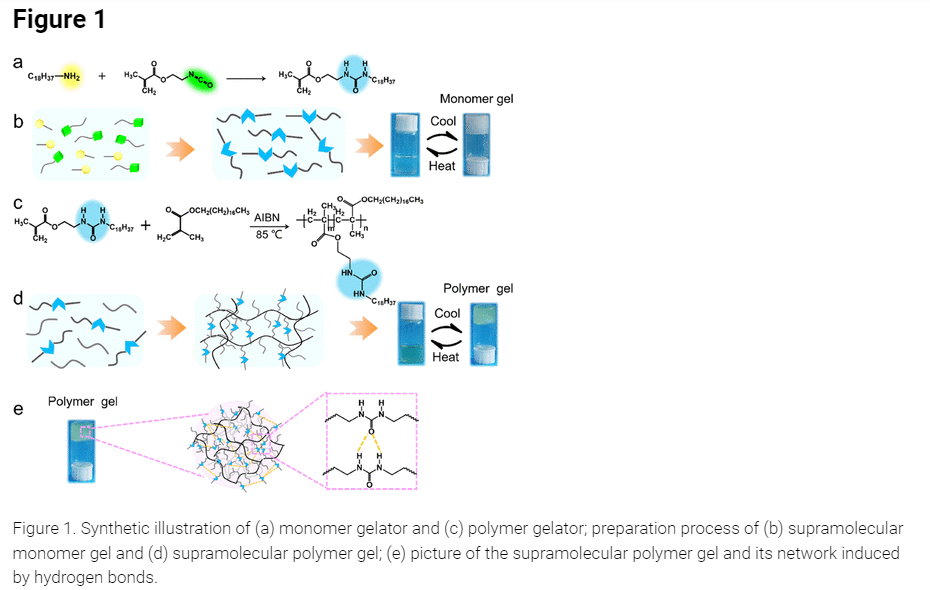Abstract
Lubricants performing better in machinery systems would lead to the remarkable reduction of environmental pollution problems and the significant improvement of fuel economy. A new family of supramolecular polymer gel lubricants with urea groups has been successfully prepared via self-assembling noncovalent bonds. These newly designed supramolecular polymer gels were well characterized with field-emission scanning electron microscopy, proton nuclear magnetic resonance, attenuated total reflection-Fourier transform infrared spectros-copy, a rheometer, oscillating reciprocating friction, and a wear tester. Compared to low molecular weight supramolecular gels, the covalent and noncovalent bonds cooperated in the supramolecular polymer gel based on macromolecules. Hence, the mechanical properties and viscoelasticity of gel lubricants are greater than those of the low molecular weight supramolecular gels. Furthermore, owing to the longer chain length of polymer gelators, the thickness of the adsorbed film formed on the surface lubricated by macromolecules is thicker than that on the surface lubricated by low molecular weight supramolecular gels, which positively correlates with the lubricating property, making supramolecular polymer gels based on macromolecules better than low molecular weight supramolecular gels. Excitingly, the supramolecular polymer gels based on macromolecules exhibit more excellent thermal reversibility, creep recovery, and thixotropic properties, which not only achieve the lubricating property but also lead to the remarkable reduction of environmental pollution problems due to oil creeping.
Lubricants performing better in machinery systems would lead to the remarkable reduction of environmental pollution problems and the significant improvement of fuel economy. A new family of supramolecular polymer gel lubricants with urea groups has been successfully prepared via self-assembling noncovalent bonds. These newly designed supramolecular polymer gels were well characterized with field-emission scanning electron microscopy, proton nuclear magnetic resonance, attenuated total reflection-Fourier transform infrared spectros-copy, a rheometer, oscillating reciprocating friction, and a wear tester. Compared to low molecular weight supramolecular gels, the covalent and noncovalent bonds cooperated in the supramolecular polymer gel based on macromolecules. Hence, the mechanical properties and viscoelasticity of gel lubricants are greater than those of the low molecular weight supramolecular gels. Furthermore, owing to the longer chain length of polymer gelators, the thickness of the adsorbed film formed on the surface lubricated by macromolecules is thicker than that on the surface lubricated by low molecular weight supramolecular gels, which positively correlates with the lubricating property, making supramolecular polymer gels based on macromolecules better than low molecular weight supramolecular gels. Excitingly, the supramolecular polymer gels based on macromolecules exhibit more excellent thermal reversibility, creep recovery, and thixotropic properties, which not only achieve the lubricating property but also lead to the remarkable reduction of environmental pollution problems due to oil creeping.

Keywords Plus:CIRCULARLY-POLARIZED LUMINESCENCETRANSITIONNETWORKSSEBS
Published in ACS APPLIED MATERIALS & INTERFACES;10.1021/acsami.2c14306,SEP 2022


